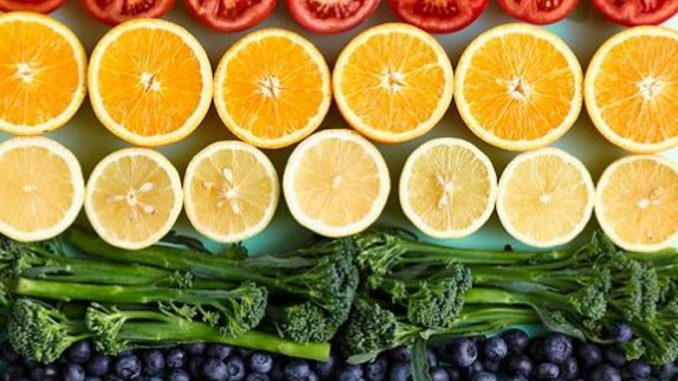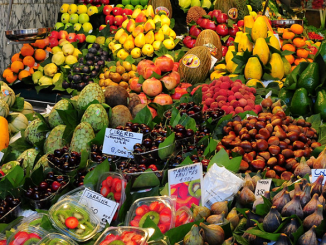
AMHERST, Massachusetts, January 7, 2021 (ENS) – Technologies like 3-D printing and lab-based meat now enable us to create food in new ways that have left the whole world with an array of new possibilities.
“There are so many exciting things going on in the food science area,” says David Julian McClements, professor of food science at the University of Massachusetts Amherst. “We’re in the midst of an unprecedented era of rapid scientific and technological advances that are transforming the way our foods are produced and consumed.”
McClements’ most recent book, “Future Foods: How Modern Science is Transforming the Way We Eat,” investigates the intersection of food and science today, not just for students but also for the general public. The book explores the use of technology and design principles to create foods of the future that are more sustainable, healthier, and tastier than foods are today.

How to create functional foods, fortified with nutraceuticals or probiotics that help prevent malnutrition and fight chronic diseases, is a main focus of McClements’ book. “My journey through the future of foods has been both an enlightening and humbling experience,” he said.
McClements stresses that consuming more fresh food is not a viable option for many people, especially not in space. So, he has been working with the National Aeronautics and Space Administration, NASA, to create space-friendly functional foods for long expeditions to other parts of the solar system.
“What we really need are processed foods that are affordable and convenient but also healthy and tasty,” writes McClements. who specializes in food biopolymers and colloids as well as food nanotechnology.
In an energetic tone, McClements tells readers about personal experiences with new foods. He shares an anecdote about his nephew in Scotland who conducted a casual taste-test with a bag of edible insects.
A vegetarian for years, McClements has highlighted the importance of more sustainable edibles, contributing factual evidence about the world’s food needs, consumption, and production.
He recognizes that the sustainable food revolution has already entered U.S. grocery stores with products such as plant-based Impossible Meat, which went on sale in July 2016.

“Clean meat,” meat created from cells of animals that have been grown in fermentation vats or test tubes with modern biomedical technology, and “bug meat,” meat from insects used as a substitute to cattle meat, do not seem too far away from greater commercial use.
“You actually get meat,” McClements says, “without any animal being killed.”
McClements suggests that since countertop 3-D food printers are already available, there will be a day that everybody could have one at home.
Just by pushing a button on the 3-D printer, powdered nutrition can be turned into tasty and healthy food for everyone in a family.
“We built a platform that uses 3-D printing to create food microstructures that allow food texture and body absorption to be customized on a personal level,” said Jin-Kyu Rhee, associate professor at Ewha Womans University in South Korea.
“We think that one day, people could have cartridges that contain powdered versions of various ingredients that would be put together using 3-D printing and cooked according to the user’s needs or preferences,” he said.

The process of 3-D printing food does not vary much from the process of 3-D printing other materials. In both settings, raw materials are built up in thin layers to create the final product.
For a 2018 study at Ewha Womans University, researchers used a 3-D printer to replicate food with similar physical and textural properties as those in everyday food samples.
If people get used to 3-D printing food, either at home or on a commercial scale, it could help reduce global food waste and the carbon footprint associated with ingredient transportation. And 3-D printing meals offers a possible solution to a growing world population.
“We are only in early stages, but we believe our research will move 3-D food printing to the next level,” said Rhee. “We are continuing to optimize our 3-D print technology to create customized food materials and products that exhibit longer storage times and enhanced functionality in terms of body absorption.”
To see 13 new books and reports about the future of food, check out this report from Yale Climate Connections about feeding the world in a warming climate.
–By Georgia Seidman
Featured Image: Impossible Foods plant-based burger. March 27, 2021 (Photo by Kim Siever)
© 2021, Environment News Service. All rights reserved. Content may be quoted only with proper attribution and a direct link to the original article. Full reproduction is prohibited.



